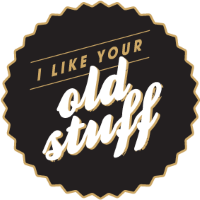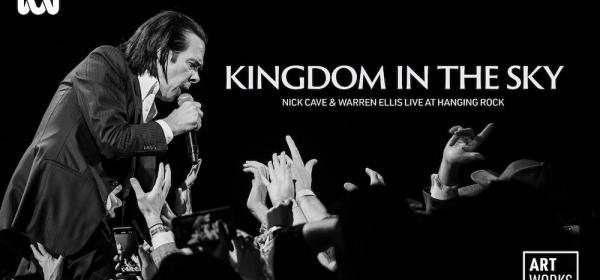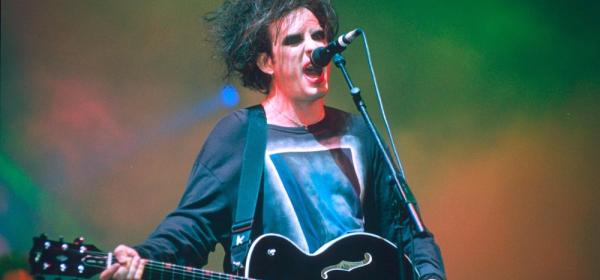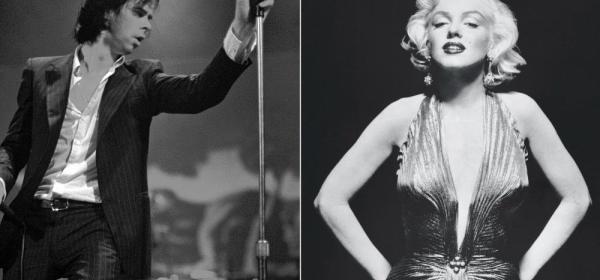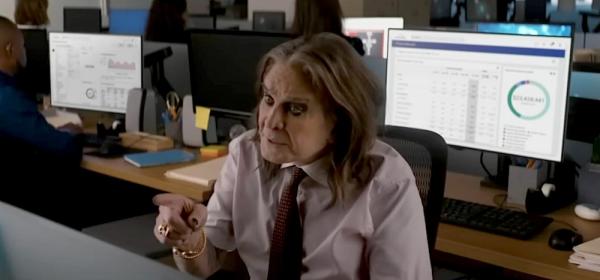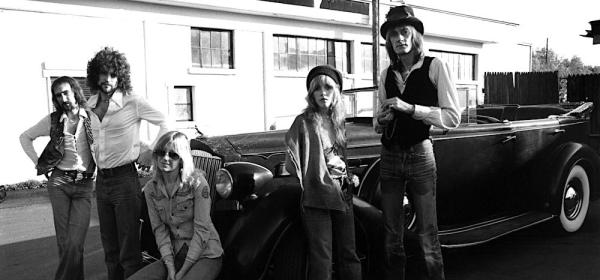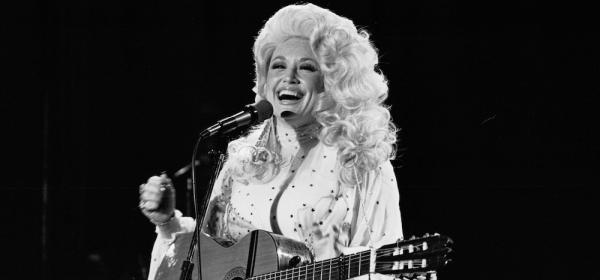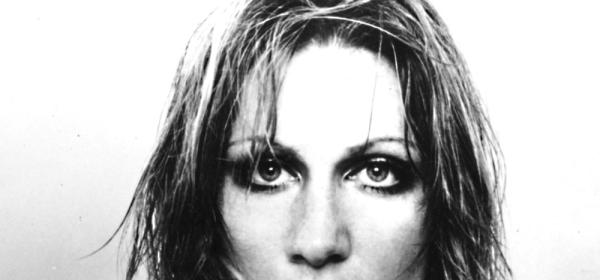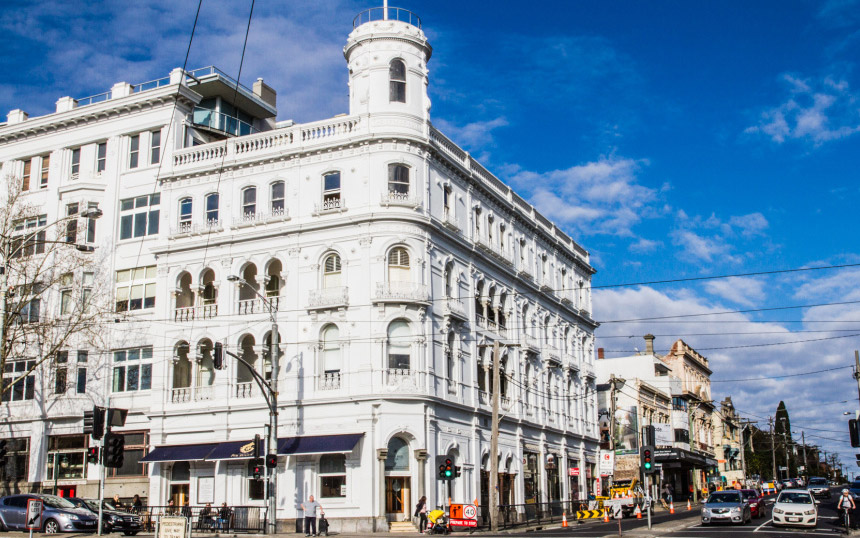
This week marks the 40th anniversary of the first show at the iconic Melbourne venue the Crystal Ballroom. The Ballroom was the early home base for the likes of Nick Cave, Sean Kelly and Mark Seymour, destination of choice for the likes of the Go-Betweens and the Angels and Midnight Oil early on, and venue of iconic Melbourne appearances by the likes of the Stranglers, XTC, Magazine, the Cure, Iggy Pop and others.
ILYOS looks at the history and legacy of this St Kilda icon. And if you went there, we want to hear your stories!
“The Ballroom” it was known as to all who went there in its various incarnations. The old George Hotel, on the corner of Fitzroy and Grey Streets in St Kilda, was renamed the Seaview Hotel in 1976. It was the centre of music in Melbourne from 1979 through to the mid-80s when St Kilda was still famously low rent and the centre of Melbourne’s arts community - from the post-punk era through to the glory days of the 80s alternative scene. Originally and most famously it was the Crystal Ballroom, which opened its doors and it’s first-floor ballroom this night forty years ago with Melbourne’s then number one sons The Sports headlining over the Boys Next Door and openers Ross Hannaford’s Reggae Allstars.
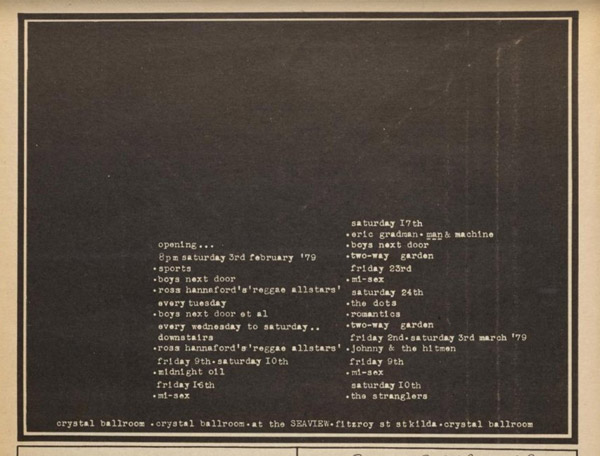
It was a typically odd bill for a venue that for a few years at least would attract much industry attention as well as quickly become a home for the young post-punk audience. Hannaford, bless him, was Daddy Cool’s guitarist and reborn reggae obsessive – he represented the old guard, and would soon become a regular at another St Kilda icon, the Espy - while the Sports sat somewhere in the middle. The Sports had more than once given the Boys Next Door a run, and the Boys Next Door, with Nick Cave up front and Mick Garvey and Rowland S Howard on guitars, were definitely the new breed.
The venue had started up some months early in August ’78 under the auspices of booker Delores San Miguel but officially became the Crystal Ballroom under the guidance of promotor Laurie Richards in February '79, who opened up the old ballroom on the first floor. Richards promoted it aggressively with ads in alternative media like Roadrunner magazine, and newsletters and flyers distributed to the plethora of indie record shops around town, like Missing Link in the city and Greville Records in Prahran. The venues distinct logo and visual style made it a noticeable brand immediately because of what Richards had envisioned it as – the home of Melbourne’s alternative music scene.
In its first year or so the venue played host to industry behemoths like the Angels, then at the peak of their success, although still appealing somewhat to certain parts of the punk scene. Midnight Oil played there around the time of their self-titled first album. All the “mainstream” alternative bands from around the country – Mi-Sex, Mental As Anything, The Hitmen, Jimmy & The Boys, the Reels, Flowers, before they became Icehouse, a young INXS. Split Enz, on the back of “I See Red,” Chris Bailey’s Saints, and Ed Kuepper’s Laughing Clowns. The Go-Betweens, before heading to London. Overseas bands – the ones you could hear on 3RRR, not 3XY or EON-FM – were fairly regular too – Dr. Feelgood, the Stranglers, UK Squeeze, the Members, Magazine, XTC, Simple Minds and a bit later the Cure and the Dead Kennedys.
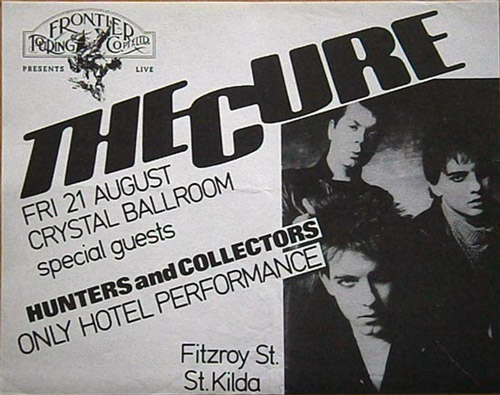
Of course, there were plenty of local regulars other than the Boys Next Door, from the Models to Paul Kelly’s early Dots to Ollie Olson’s synth punks Whirlyworld; with numerous others in between. La Femme, James Freud/Radio Stars, Eric Gradman Man & Machine, the Secret Police (who became the Little Heroes), the Editions (featuring future St Kilda mainstay Fred Negro), the International exiles, Serious Young Insects (who much later became Boom Crash Opera) and more. Melbourne’s “Little Band” scene – out of which came the Primitive Calculators and Lisa Gerrard, who formed Dead Can Dance with former Marching Girls frontman Brendan Perry in Melbourne in 1981 - all had a home there in 1980.
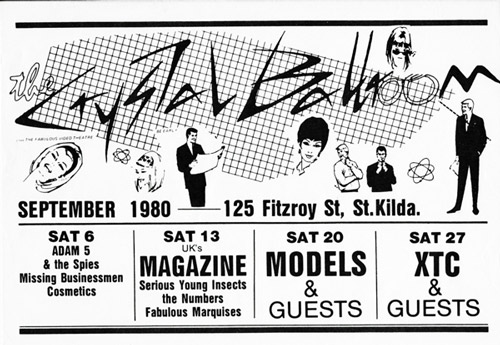
Richards developed the idea of giveaway singles – records – to market certain shows. The split Boys Next/Models single – the Models first appearance on record – that was given away at a big show featuring the two on October 20, 1979, became an instant collector's item.
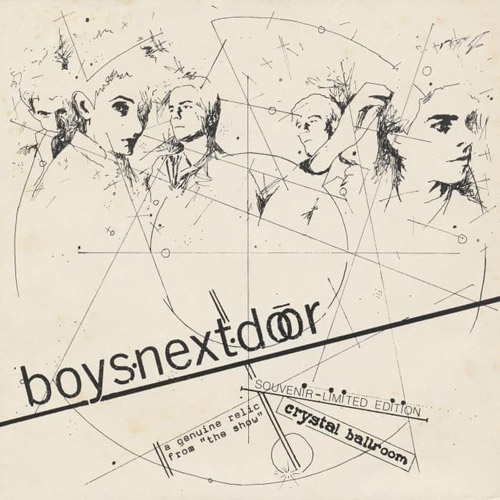
Mark Seymour made his entry onto the scene as part of the short-lived Jetsonnes in 1980; his brother Nick, of Crowded House fame, in the Romantics – not the American band of course. Hunters & Collectors played early shows there – and quickly became Princes on the scene - in ’81.
The Birthday Party, no longer the Boys Next Door and back from the UK, played famous shows in there in '80 and '82.
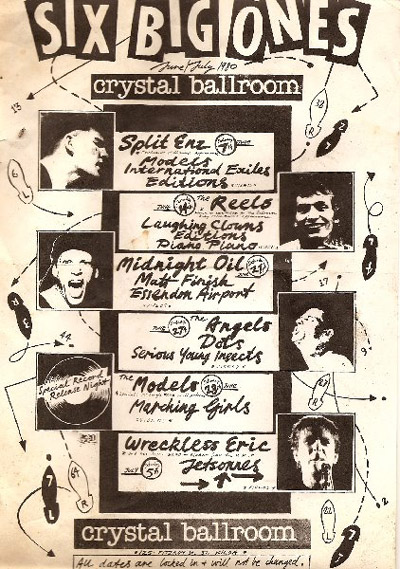
The venue ran in the upstairs ballroom, although there was a decent size ground floor room as well, that San Miguel ran as the Paradise Lounge during Laurie Richard's tenure. Richards left in January 1981, after which Delores ran the venue in association with new promotor Nigel Rennard (who would also soon take over Missing Link Records) until September '81. Rennard ran the venue as the Seaview Ballroom until the end of ’83, when Dolores returned.
Rare upstairs shows in later years included Iggy Pop in ’82 and the Gun Club ’83.
The Birthday Party played their last ever show there June 9 ‘83.
Nick Cave, post-Birthday Party and pre-Bad Seeds, played there as Nick Cave Man or Myth on New Years Ever 1983, with supports including Plays With Marionettes (whose Hugo Race also played guitar with Cave) and up & comers the Painters & Dockers, who took their name from a notorious waterfront union as a piss-take of the fashionable Hunters & Collectors .
With activity centred on the ground floor, the Seaview Ballroom, once it was known as that, became the home to the likes of Hugo Race’s new band the Wreckery, Models offshoot the Sacred Cowboys (whose drummer Johnny Crash was actually living upstairs at the hotel at the time), the Olympic Sideburns and the Corpse Grinders. The Sunnyboys who had played a key early Melbourne show there in 1980, played one of their last Melbourne shows a few years later, and the bands from the thriving early-to-mid ‘80s Sydney scene – the Scientists, the Celibate Rifles, the Beasts of Bourbon – were regular visitors.
In the year or two before it closed, it would host free Thursday night shows, as would the Prince of Wales a few blocks up the road, enabling patrons to do the ‘Thursday night shuffle’ back and forth between the two venues to catch all their favorites for nothing.
The Ballroom closed its door as a venue for good in 1986, and in 1987 was unable to renew its liquor license due to complaints from neighbors regarding heroin dealing in the front bar and more. It reopened under its original name, The George Hotel, in 1991.
The Ballroom is remembered by its habitués on the I Got Drunk At The Crystal Ballroom Facebook page, here.
Delores San Miguel tells of her years as the venue's booker and promoter in her 2011 book The Ballroom: The Melbourne Punk and Post-Punk Scene.
